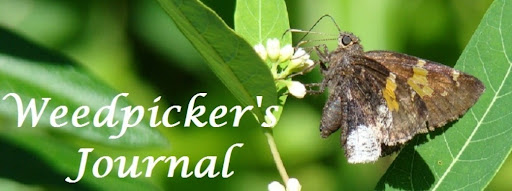This "green" footprint started it all! The Midwest Birding Symposium hosted the very first Carbon Offset Birding Project in 2011, in my old hometown of Marblehead, Ohio. It was our interest in this wetland that brought the Black Swamp Land Conservancy and their capable staff on board. Isn't it wonderful to celebrate good things happening in the environmental world?
Read the complete news release below:
Marblehead, OH – Black Swamp Conservancy
has acquired an 80-acre tract of land and donated it to Danbury Township in
Ottawa County, Ohio. The property, located on the Marblehead Peninsula, is
adjacent to the township’s existing 111-acre Meadowbrook Marsh Preserve and
will expand the size of the preserve to more than 190 acres.
The existing 111-acre preserve, owned and managed by
the township, includes trails, picnic facilities and an observation platform
for wildlife viewing. The new addition connects to the existing preserve to
create a cohesive corridor and preserves the remainder of the marsh, which
contains a diverse mixture of habitats and harbors a number of rare species. In
addition to the land donation, Danbury Township and Black Swamp Conservancy have
entered into a perpetual land conservation agreement on the entire 191-acre
preserve, to ensure the significant natural resources on the property remain in
their natural state forever.
“Meadowbrook
Marsh Preserve is a grand slam for land conservation. It is open to public use,
has scenic beauty, protects wildlife habitat and wetlands, and provides a
terrific location for bird watching, which is an important part of the tourism
industry along Lake Erie,” said Kevin Joyce, executive director of Black Swamp
Conservancy. “We are really pleased to partner with Danbury Township and the
Ohio Ornithological Society to nearly double the size of Meadowbrook Marsh
Preserve – at no cost to the township.”
Black Swamp Conservancy, based in Perrysburg , Ohio
“This is a very meaningful project
for Black Swamp Conservancy,” said Rob Krain, its conservation director.
"Meadowbrook Marsh is a truly unique site, of exceedingly high biological
value. We commend the Danbury Township trustees for having the foresight to set
this place aside for wildlife habitat, public recreation and environmental
education. It is a real pleasure for us to assist with this expansion and
permanent protection of the preserve.”
While the Marblehead Peninsula
"Meadowbrook is a magnificent wildlife oasis in
the heart of one of the most popular destinations in the state of Ohio,” stated
Danbury Township trustee Dianne Rozak. “It offers an excellent experience for
passive recreation while maintaining natural areas for species that make their
home in its woods and grassland. The trustees are very pleased to acquire
additional land for this preserve and look forward to a rewarding partnership
with the Black Swamp Conservancy."
The Ohio Ornithological Society and Carbon Offset
Birding Project (COBP) played a key role in the project. Recognizing the ecological
significance of Meadowbrook Marsh, and fearing the property might soon be lost
to development, the Ohio Ornithological Society contacted Black Swamp Conservancy
for their expertise in land protection. Before this land donation, the majority
of the marsh and surrounding natural habitat was not protected from development
or conversion to agricultural use. The Ohio Ornithological Society also
contributed money for the purchase of the property, which they raised during
their Midwest Birding Symposium held annually in Lakeside, Ohio.
“Protection of our rapidly
diminishing wetlands is critical for Ohio’s wildlife and migratory bird
species,” stated Cheryl Harner, past Ohio Ornithological Society board member.
“The Ohio Ornithological Society and the thousands of birders in Ohio applaud
the actions of the Danbury Township trustees. They are protecting the last
great wetland in the township and providing access to this important area.
Marblehead is a better place today because the trustees were proactive in
working to attract more bird watching tourists.”
For more information, visit www.blackswamp.org.



























